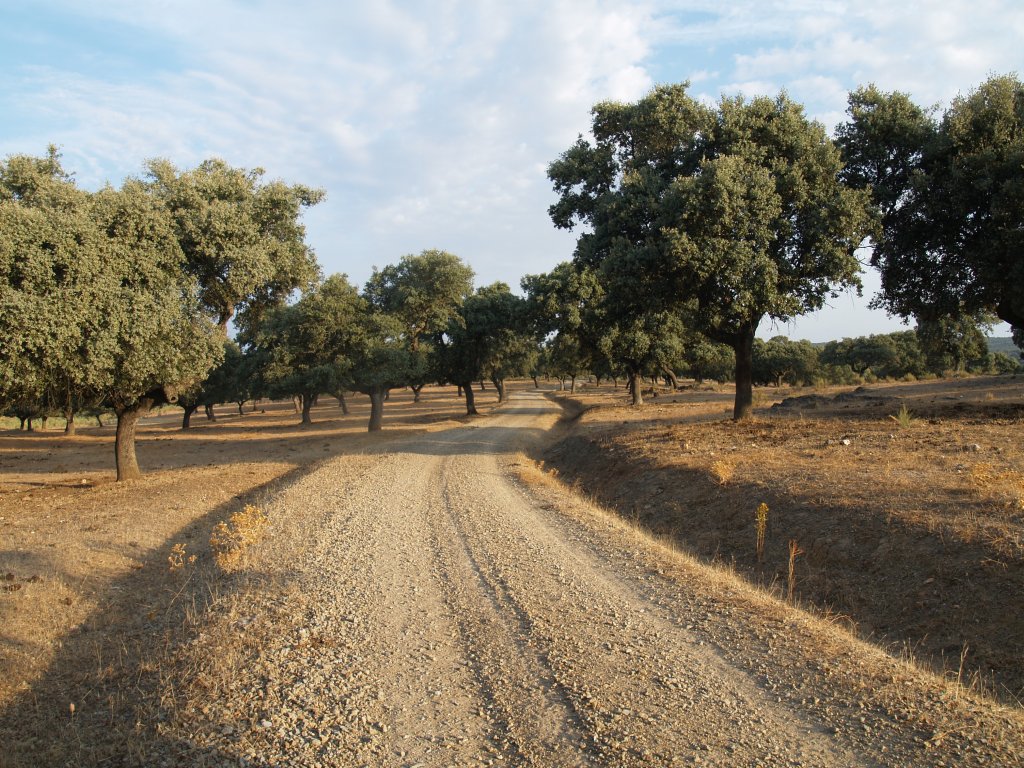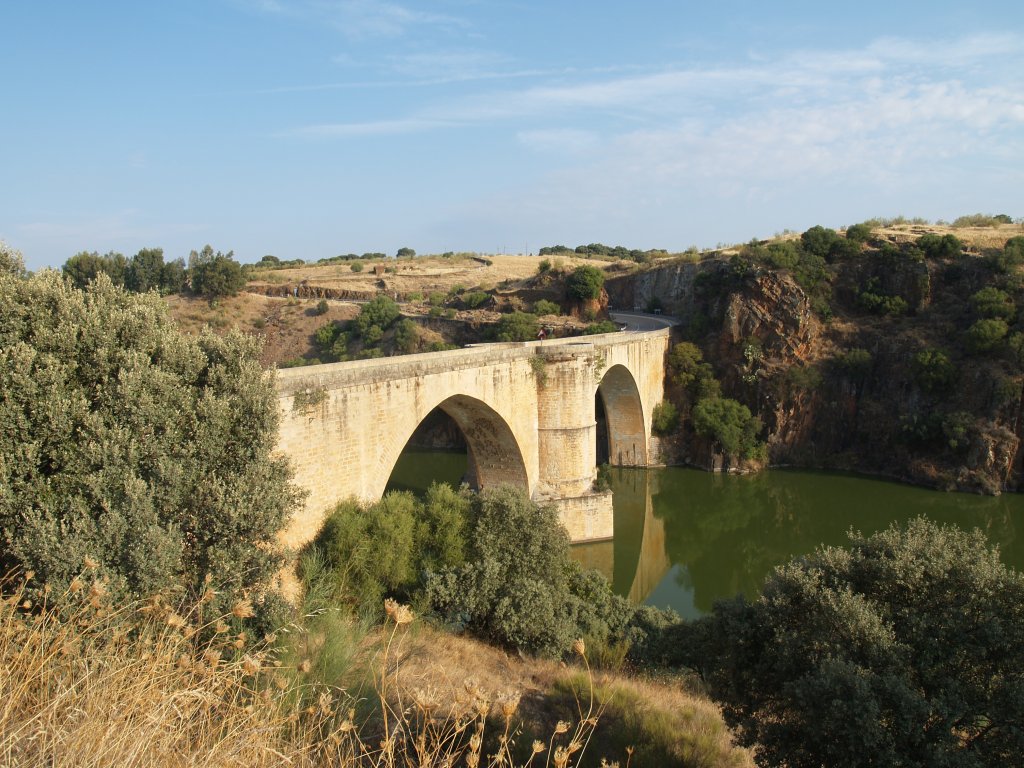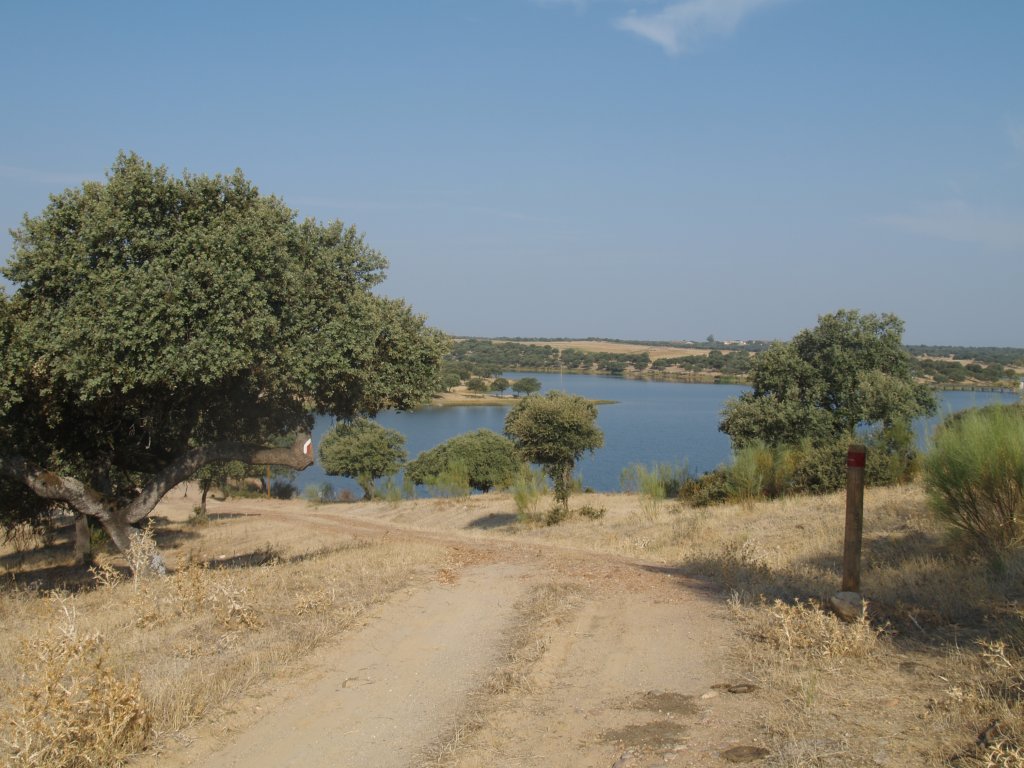Stage 33: Higuera de Albalat - Serrejón
Description

Holm and cork oak "dehesas"
Leaving behind the hospitable village of Higuera, the Trail continues through the most typical landscape of this territory: the Extremaduran "dehesa". After crossing Arrocampo Dam and Anguila Reservoir, the route arrives at Serrejón, the first town within Monfragüe National Park.
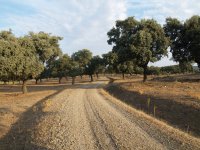
The Trail heads down a local road, which it immediately abandons to take a path on the right leading to "El Gato" farmstead. Between old stone walls, the track ventures into a private hunting ground, where caution must be exercised as fighting bulls can be found roaming freely.
One can enjoy the beauty of the holm oaks (Quercus ilex) and cork oaks (Quercus suber), that make up the dehesa. Some of the trees of the latter species may appear orange due to the removal of the bark for cork.
Further on, the path crosses over the River Tagus, via a masonry bridge with two arches. The Nature Trail and the N-V road overlap at this bridge, although they part ways again, only to overlap further ahead.
From here, the route continues towards a viaduct over the E-90/NV road, then continues parallel to this road until it changes its direction to skirt around Torrejón-Tajo Reservoir. Leaving the scenic views of the reservoir and the Almaraz nuclear power plant behind, the path drifts away from the road to the right, and ventures into another private hunting ground typical in Extremadura.
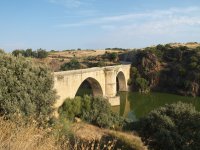
The presence of birds endemic to the Anguilla Reservoir is increasingly frequent as the route ventures deeper into these lands. It is even possible to watch the fishing techniques of several bird species. The route skirts around the eastern side of the reservoir, and continues to the endpoint of this Stage.
Once at Serrejón, a town located between the flood plains of Campo Arañuelo (Toril and Saucedilla) and the mountains of Monfragüe National Park, the traveller can enjoy the first glimpse of the wonderful landscapes and biodiversity of this protected area.
Profile
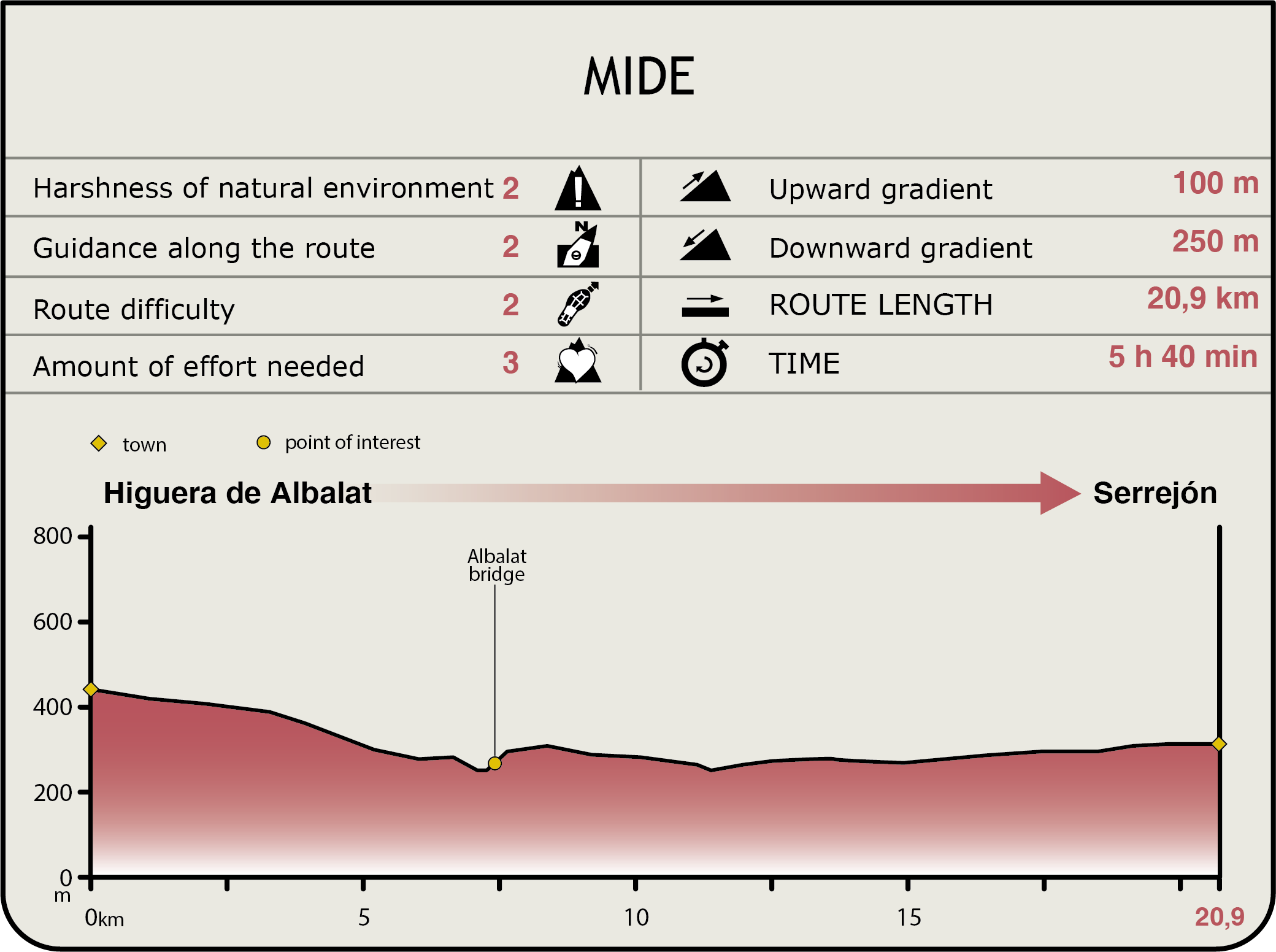
MIDE (Method for the Information of Excursions)
Featured
Further information
Monfragüe National Park
Monfragüe was declared a Nature Park in 1979, a Biosphere Reserve in July 2003, and a National Park in 2007. It is also part of the Natura 2000 network.
It is one of the finest existing Mediterranean forests, with traces of Atlantic and continental vegetation. The rivers Tagus and Tiétar are the pivotal elements of the Park, wedged in a narrow gorge, between two quartzite and slate mountain ranges.
The rich biodiversity of the Park and its surroundings, its most outstanding feature, draws on these biotic and abiotic characteristics and its good state of conservation.
In addition to the typical species of the area, holm oak, cork oak, strawberry tree, rockrose and heath, the southern slopes are also populated with other deciduous species such as Portuguese oaks (Quercus faginea), and maples (Acer sp.) and the rivers and creeks are home to ash trees (Fraxinus excelsior).
The biogeographical features of this territory, along with the diverse structures and compositions of plant communities and low human activity, make possible the existence of numerous, critically endangered wildlife species. These species are critical for the conservation of the genetic diversity of the Mediterranean. Notable amongst these species for their scientific interest, uniqueness and vulnerability are the Spanish Imperial Eagle (Aquila adalberti), the Cinereous Vulture (Aegypius monachus), the Black Stork (Ciconia nigra) and the Iberian lynx (Lynx pardinus).
The dehesa, an example of a balanced ecosystem modified by human activity, surrounds the Park. Numerous wild species forage and coexist with the livestock grazing in the shade of holm and cork oaks. Flying over the dehesa are large raptors, whilst small birds feed off this land.
Serrejón
The most notable building in the town is the parish church of San Ildefonso, whose construction began in the 15th century and completed in the 18th. It is a rectangular, slate masonry building, with stonework on the doorways and arches. The most remarkable elements are the façade, altarpiece and lateral altars, and the statues found therein.
The shrine of San Antonio dates back to the eighteenth century. The rectangular building is made of masonry. The statues of San Antonio and the Virgen de la Oliva, patroness of Serrejón, can be found inside.
The area near Serrejón is also home to several shrines, many of which are barely ruins. This is the case of the shrines of Santiago (16th c.); Santa Lucia, of which only the foundations and walls still stand; and Nuestra Señora la Virgen de la Oliva, located five kilometres from the town.
The viewpoint of Canchos is also located close-by, where the traveller can enjoy nature and views of the rugged natural landscape.
Close to Serrejón is the Bermeja Cave, with rock paintings of great historical value.
